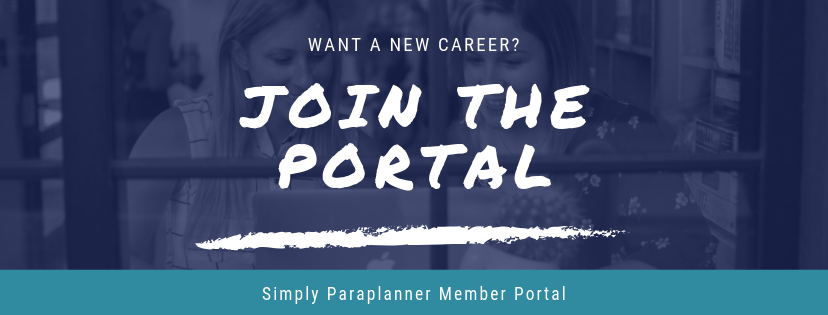
3 Tips to Help You Start Working With a New Advisor
Having great relationships with your financial planners can make or break your business—and your career.
If you have any prior experience working one-on-one with clients or partners, you already know that starting off on the right foot should be your number one priority when you’re setting out. For a new paraplanner, that means creating a sense of confidence in your work, as well as respect for your knowledge and willingness to learn.
Stepping into your new role might feel overwhelming, especially if you’re still learning the ropes of working as a paraplanner—but it’s a little easier when you keep a few key things in mind. Here’s how to jump into your role with a new advisor with a ton of confidence.
1. Identify and familiarize yourself with common financial planning tasks.
There’s no sense diving into the deep end when you’re just starting out. Instead, check for any resources that are immediately available and applicable to you before you start working with your advisor.
For example, the Certified Financial Planning Board’s website is generally a good place to start. The majority of the planners you’ll work with throughout your career are likely going to be Certified Financial Planners (CFPs), so it’s a good idea to be familiar with the standard process going into the job. And fortunately, regardless of whether your planner is or isn’t a CFP, most planners follow a process that’s similar to the CFP process. Even if they aren’t following the extra layer of the code of ethics laid out on the CFP website, they’re probably doing more or less the same tasks, meaning the job will generally look the same regardless of your planner’s CFP status.
To identify common steps in the financial process and familiarize yourself with them in advance, check out the domains and tasks for each step of the planning process in the document located on the CFP board’s website.
2. Build up confidence by preparing your pitch in advance.
Before you jump on board with a new financial planner, it’s best to know where your strengths and weaknesses lie. This way, you can decide how to showcase your strengths and how to make your weak areas stronger. Try using the lists and process maps on the CFP website (the same ones mentioned above) to identify the key tasks you’re already good at, as well as any that you’d like to start strengthening further. This is a crucial step toward developing confidence in yourself, and making sure that your financial planner can really sense your self-assurance.
When you start out, you can begin working on the types of tasks you’re most confident in. For example, if you know you’re skilled with investment analysis or taxes, have your planner delegate tasks in those areas first. But as you continue developing a relationship with your planner, you can enlist their help as you work on the other areas you struggle with a little more. 
Remember, your paraplanner wants to be confident that you’re confident in your work, so don’t be afraid to show self-awareness and admit your own weaknesses. If you approach it right, you’d be surprised how far a little frankness can get you with your paraplanner. Combine it with an expressed willingness to learn more, and you’ll find yourself quickly earning their trust.
When preparing your pitch, try phrasing it something like this: “I’m not strong in this area yet, but I’d like to learn how you do it so that I can help you in the future.” Showing off your dedication to improvement and eagerness to take on more work will help set you up for more hours down the line.
3. Walk-through your advisor’s process, step by step.
It’s crucial for your advisor to feel that you’re actually trying to help them, especially when you’re first starting out. One thing we’ve found helpful is to make sure that your advisor has you work through their entire process, all the way from start to finish. This gives you the opportunity to see them do it exactly as they expect you to do it when you work for them, and it’s a great way to make sure you’ve been trained on the most important tasks.
No matter who you’re working with, the process will look something like that CFP process we mentioned above—but every advisor is slightly different in how they actually carry out that process. For example, you’ll find that some advisors are very nuanced and dig into the minor details of each task, while other advisors prefer a “big-picture,” cut-and-dry process. Regardless of your advisor’s preferences, seeing their process from end to end is a great way for you to get started. It can also help reinforce your ability to prepare a quality plan without having an advisor look over your shoulder to edit your work, or having to ask them a million questions each time.
Of course, remember that their process is going to change as they start working with you. As you gain more experience and familiarity with their process, you’ll be able to make suggestions based on best practices from other paraplanners you’re working with. You’ll also be able to pick and choose strategies and ideas from other advisors in order to help improve the processes of other planners you work with.
At the end of the day, the key to starting off on the right foot with your new financial planner is to create an atmosphere where you both feel confident taking those first steps together. You should feel comfortable asking plenty of questions to situate yourself. And as you continue to work with your advisor, you’ll become more and more familiar with their process and personality, allowing you to switch up your own workflow to better suit them.
For more tips and tricks to help you get started as a paraplanner, be sure to check out the other topics on our blog! Plus, as we get closer to re-opening our Paraplanner Portal, we’ll be sending out reminder emails with more info on getting access to all of our helpful resources, so don’t forget to sign up for our waitlist.

